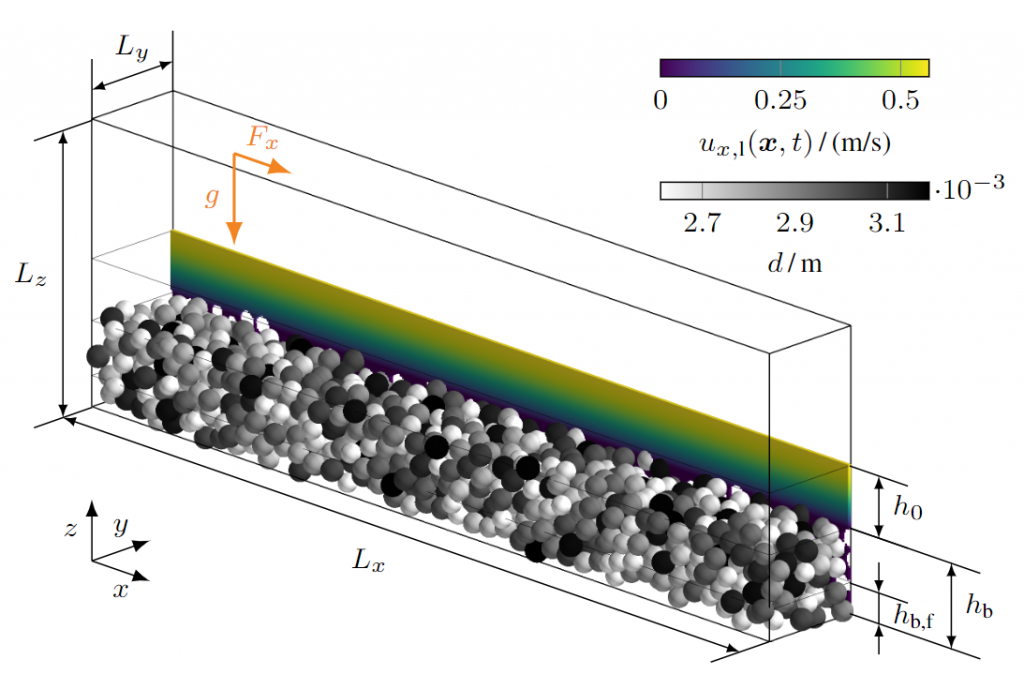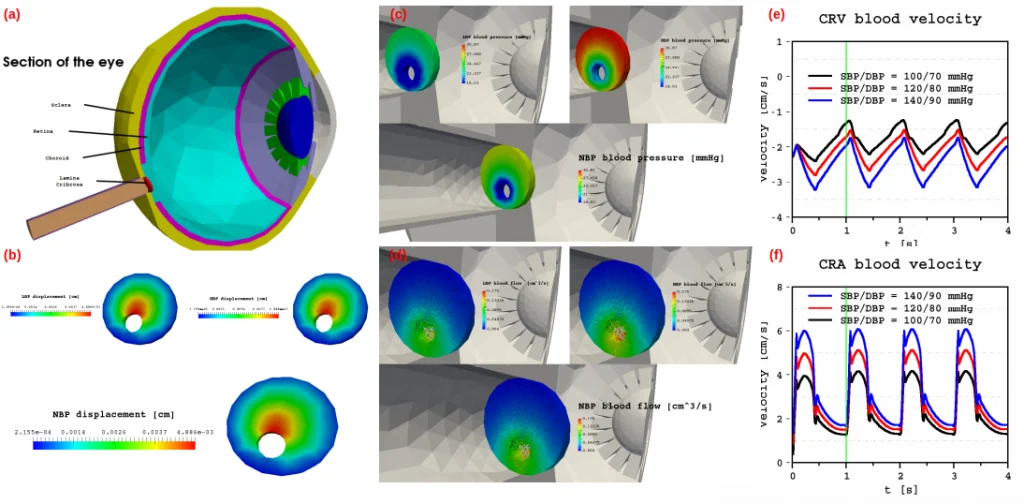Computational Fluid Dynamics (CFD) simulations are critical for understanding and predicting complex fluid dynamics phenomena that are often difficult or impossible to capture by experimental methods alone. An example of the active use of CFD simulation to aid in the understanding of a complex flow scenario is demonstrated in this project, which marks the first numerical simulation of upstream-migrating antidunes with geometrically resolved particles and a liquid-gas interface. It builds on the foundational work of Schwarzmeier et al [1]. To effectively handle the computational demands and physical intricacies of these simulations, the researchers used the cumulant lattice Boltzmann method along with a discrete element method for particle interactions, complemented by a volume of fluid scheme to track the deformable fluid surface.
The primary goal of these simulations was to replicate the laboratory experiments conducted by Pascal et al [2], which involved water flowing over a bed of natural gravel. By matching these simulations to these empirical experiments, we aim to gain deeper insights into the dynamics of antidune formation and migration.

Figure 1: Simulation setup in its initial condition as a zoom into the computational domain covering only 16 % of its streamwise extent.
Bed Elevation Perturbations
The simulation results provide a comprehensive three-dimensional view of the entire simulation domain, as shown in Figure 2. The free surface waves are aligned with the sediment bed, forming distinct antidunes. The alternating blue and yellow (dark and light) diagonal lines represent the troughs and crests of the bedforms, respectively. Both the experimental and numerical plots show the evolution of bottom elevation through time and space, and show strong qualitative agreement.

Figure 2: Visualization of the antidunes simulation with the simulated velocity in streamwise direction and the diameters of the spherical particles. The undulation of the sediment bed and free surface of the liquid are in phase, conforming to the definition of antidunes.
Upward migration of the bedforms is evident from the negative slope of the stripes, with some regions showing bends indicating acceleration, deceleration, or even stationary phases of the bedforms. Overall, the stability of the simulated bedforms and their close resemblance to experimental observations validate the numerical approach. The extensive data generated by these simulations, obtained in a non-intrusive manner, provide valuable insights to complement experimental measurements under challenging supercritical flow conditions.

Figure 3: Sediment bed elevation for experiment E1 (left) and experiment E4 (right): a and c data from Pascal et al. [2], and b and d data from the numerical simulations. We consider the system fully developed after t = 30 s, as illustrated by the dashed black line.
This simulation approach, performed with FAU’s waLBerla CFD simulation framework, provides detailed data on particle and fluid motion, opening up numerous avenues for further research. This study highlights the potential for additional simulation campaigns to deepen the understanding of antidune mechanics and the physical factors influencing bedform initiation and morphodynamics in supercritical flows.
Ongoing Research / Outlook
Building on our validated proof-of-concept simulation model, we plan to conduct extensive large-scale simulation studies in future research. These simulation campaigns will improve our understanding of antidune formation and propagation. This research paves the way for more complex fluid simulations, integrating aspects such as particle-fluid interaction and multiphase CFD simulations.
As part of the HiDALGO2 project, we look forward to leveraging advances in technology and research to further our understanding of natural phenomena. Our goal is to use these advancements to contribute to a cleaner and greener future by improving the accuracy and applicability of CFD to environmental and engineering challenges.
References and Links
[1] Schwarzmeier, C., Rettinger, C., Kemmler, S., Plewinski, J., Núñez-González, F., Köstler, H., … & Vowinckel, B. (2023). Particle-resolved simulation of antidunes in free-surface flows. Journal of Fluid Mechanics, 961, R1.
[2] Pascal, I., Ancey, C., & Bohorquez, P. (2021). The variability of antidune morphodynamics on steep slopes. Earth Surface Processes and Landforms, 46(9), 1750-1765.
The blog code is freely available at: https://i10git.cs.fau.de/walberla/walberla/-/tree/master/apps/showcases/Antidunes?ref_type=heads
This blog article was written by our partner from FAU (https://www.cs10.tf.fau.de/).



